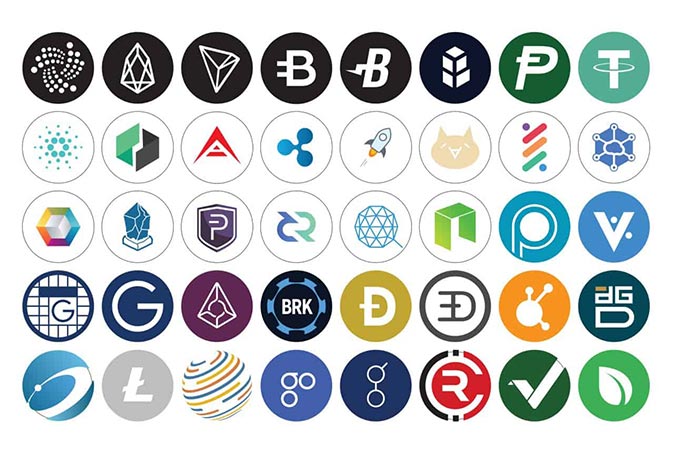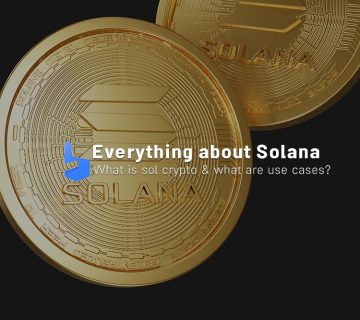What you are about to read:
More than a decade ago, the birth of Bitcoin heralded a new era in the financial landscape. It introduced the concept of decentralized cryptocurrencies that are not tied to traditional financial institutions and government control. Following BTC, many other crypto emerged, each offering unique features and use cases. These “altcoins” or alternative coins sparked discussions about the future of finance, blockchain technology, and the dynamics of the global economy.
In this Brokerland forex tutorial, we delve into the world of altcoins, examining their origins, prominent examples, and the potential they hold for transforming various industries. From Ethereum’s pioneering smart contract capabilities to Ripple’s fast international transactions, this ecosystem offers a diverse and dynamic range of innovations. Let’s explore this concept with Brokerland and delve into the altseason in forex and crypto.
What is an Altcoin?
An altcoin or “alternative coin” refers to any cryptocurrency other than Bitcoin. Bitcoin was the first cryptocurrency created in 2009 and remains the most recognized and valuable currency. The first altcoin, Namecoin, was launched in 2011 as a competitor to BTC. Since then, many other alternative coins have been created, each with unique features and goals. Examples include Ethereum, Ripple, Litecoin, and Bitcoin Cash.
alternative coins can perform various functions, such as providing additional privacy or security features, offering faster transaction times, or utilizing different consensus mechanisms. Some are designed for use as cryptocurrencies, while others are built for specific purposes like smart contracts or decentralized financial platforms (DeFi). While Bitcoin is often seen as digital gold or a store of value, alternative coin are more diverse and can be used for purposes beyond sending and receiving payments.
Here are several key points about alternative coins:
History: The first altcoin, Namecoin, was launched in 2011 as a competitor to Bitcoin. Since then, many other alternative coin have been created, each with unique features and objectives. Examples include Ethereum, Ripple, Litecoin, and Bitcoin Cash.
Diversity: alternative coins can perform various functions, such as providing additional privacy or security features, offering faster transaction times, or using different consensus mechanisms. Some are designed for use as currencies, while others serve specific purposes like smart contracts or decentralized financial platforms (DeFi).
Diverse Use Cases: While Bitcoin is often seen as digital gold or a store of value, altcoins are more diverse and can be used for purposes beyond sending and receiving payments.
CryptoCurrency Market: The market for these coins is highly dynamic and volatile. While Bitcoin is the most widely known and traded cryptocurrency, alternative coins can offer unique investment opportunities or use cases.
Risk Considerations: Investing in altcoins can be riskier than investing in Bitcoin, as their prices are often more volatile and can be influenced by a wider range of factors.
Top Altcoins
There have been numerous alternative coins in the market, some of the most famous ones include:
- Ethereum (ETH): The second-largest cryptocurrency by market value and a smart contract platform.
- Binance Coin (BNB): Created by the Binance crypto exchange, used for transaction fee discounts and various applications on the Binance smart chain.
- Cardano (ADA): A blockchain platform known for scalability, security, and stability.
- Solana (SOL): A high-performance blockchain supporting decentralized applications and crypto projects.
- Polkadot (DOT): A multi-chain blockchain platform aiming to facilitate cross-chain communication.
- Chainlink (LINK): A decentralized oracle network providing data to smart contracts from external sources.
- Ripple (XRP): A digital payment protocol used by banks and payment providers for fast cross-border transactions.
- Litecoin (LTC): A peer-to-peer cryptocurrency known for low transaction fees and fast transaction times.
- Uniswap (UNI): A decentralized exchange (DEX) like PancakeSwap for trading various currencies.
- Dogecoin (DOGE): A meme coin that gained popularity within its community and saw widespread use in tipping content creators online.
What is AltSeason?
Altseason is a term used in the crypto community to describe a period when altcoins or alternative cryptocurrencies experience an increase in value compared to Bitcoin. In other words, during an alternative coin season, investors see higher returns on their alternative coin investments compared to holding BTC.
This phenomenon usually occurs when investors shift their funds from Bitcoin to alt coins due to various factors, including:
Speculation: Investors may believe that certain coins have greater potential for growth compared to BTC due to advancements, partnerships, or future technological developments.
Market Sentiment: Positive news or developments for a particular coin can increase investor interest and drive up its price.
Sector Rotation: Investors may shift their focus to specific sectors within the crypto currency space, such as decentralized finance (DeFi) projects, non-fungible tokens (NFTs), which leads to an increase in related altcoins.
Momentum Trading: Traders often follow price movements and market trends, contributing to increased trading volume and liquidity for these coins.
It’s important to note that altseasons can be short-lived and highly volatile as the market is often driven by speculation and emotions. Investors should exercise caution and conduct thorough research before making investment decisions during these periods.
When Does Altcoin Season Happen?
As mentioned, alternative coin season is often used to describe periods when alternative coins outperform Bitcoin in terms of price growth. These periods can occur for various reasons such as positive news, technological advancements, market sentiment, or specific sector trends.
For example, in the past, there have been periods when the value of decentralized finance (DeFi) projects increased, leading to an altseason in that sector. Similarly, when NFTs gained popularity, alternative coins associated with NFTs experienced growth.
However, it’s important to note that the crypto market is highly volatile, and predicting the exact occurrence of altcoin season is challenging. Additionally, past performance is not indicative of future results, meaning that historical patterns may not always repeat themselves. Investors should conduct thorough research and analysis before making investment decisions, and generally, it’s recommended to diversify assets to reduce risk.
How long will altseason continue and last?
Altseason refers to a period when alternative cryptocurrencies or altcoins experience significant price growth compared to Bitcoin and the broader cryptocurrency market. This term is often used in bullish markets within the crypto space. It’s important to note that the duration of an altseason can vary depending on market conditions, investor sentiment, regulatory factors, and the performance of alternative coins.
Historically, altcoin seasons have been relatively short compared to Bitcoin’s bull cycles, which can last from several months to a year or more. These periods can range from a few weeks to several months, and the duration may vary from one market cycle to another.
There is no fixed timeframe for altcoin season, and predicting its exact length is challenging due to the complex and volatile nature of crypto markets.
Summary
The altcoin landscape signifies a relentless pursuit of innovation in the digital age. From the pioneering creation of Bitcoin to the countless altcoins that followed, this industry continues to push the boundaries of what is possible in finance, technology, and beyond. However, like any growing field, the alternative coin market carries risks alongside its promises. Investors should always tread cautiously, evolve, conduct thorough research, and exercise due diligence before diving into this ecosystem.
As we stand on the brink of a new financial era, these coins hold the potential to reshape industries, empower individuals, and decentralize power structures. However, they also call for vigilance, skepticism, and adaptability. Whether alternative coins evolve into the future of finance or certain markets remain, one thing is certain: they have irreversibly altered the path of the financial world and paved the way for new paradigms of value and exchange.











